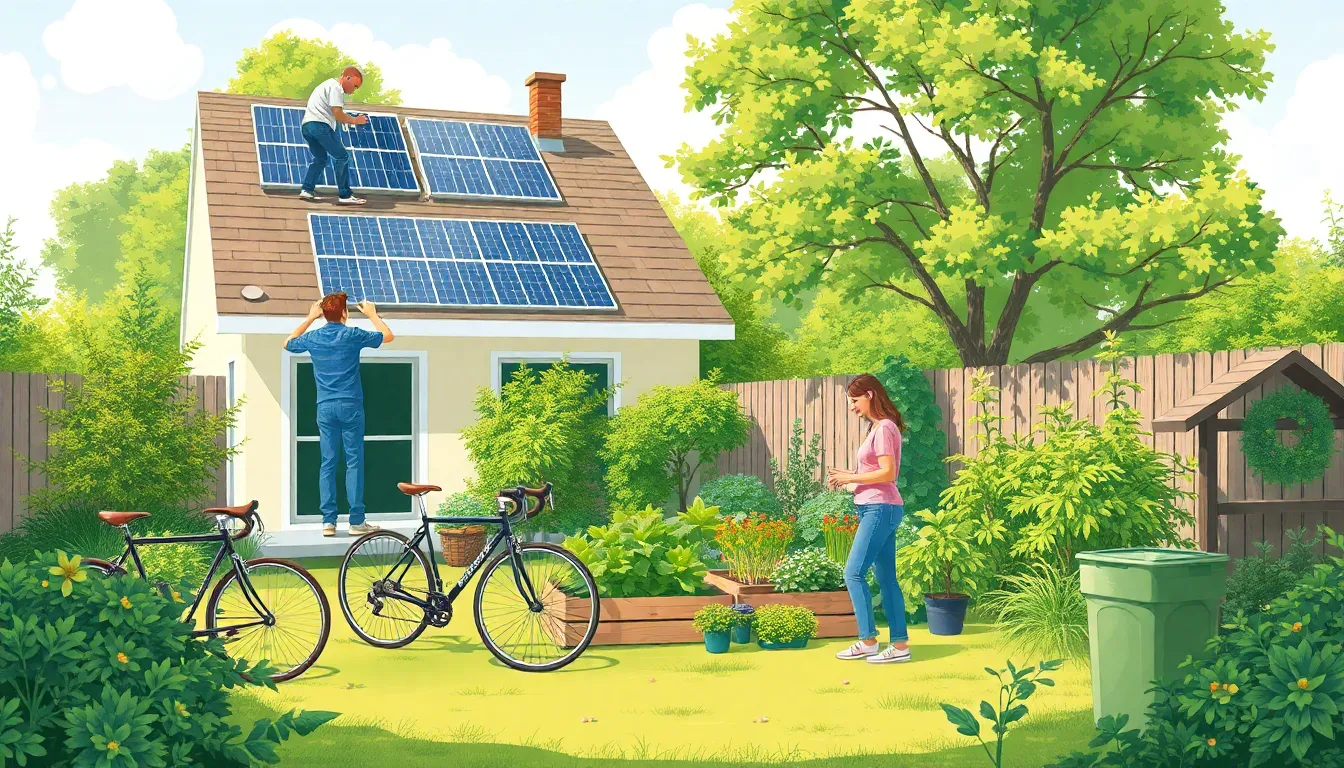Table of Contents
ToggleIn a world where being eco-friendly often feels like a chore, green smart living turns the tables, making sustainability not just easy but downright enjoyable. Imagine a lifestyle that saves the planet while keeping your wallet happy—sounds like a dream, right? It’s time to swap out those old habits for smarter choices that benefit both you and Mother Earth.
Understanding Green Smart Living
Green smart living blends sustainability with intelligent choices, promoting an eco-friendly lifestyle that enhances individual well-being. Embracing this lifestyle often leads to significant environmental benefits while simplifying daily routines.
Definition of Green Smart Living
Green smart living incorporates practices that minimize environmental impact through sustainable choices. This approach emphasizes energy efficiency, waste reduction, and resource conservation. It involves using renewable energy sources, such as solar or wind power, and opting for eco-friendly products. Participants in this lifestyle actively seek ways to reduce their carbon footprint while enjoying the comforts of modern living. Sustainable urban design, smart home technologies, and responsible consumption define this concept, making it applicable to diverse lifestyles.
Importance of Sustainable Practices
Sustainable practices play a crucial role in preserving natural resources for future generations. By adopting eco-friendly habits, individuals contribute to the reduction of greenhouse gas emissions, thus combating climate change. Utilizing public transport or cycling not only cuts down on emissions but also enhances personal health. Waste management practices, including recycling and composting, further support the delicate balance of ecosystems. Investing in energy-efficient appliances decreases overall energy consumption and lowers utility bills. Collectively, these sustainable choices encourage a healthier planet and improve quality of life for everyone.
Benefits of Green Smart Living

Embracing green smart living offers multiple advantages for individuals and the environment. This lifestyle promotes ecological balance while creating a healthier living space.
Environmental Impact
Reducing carbon footprints significantly benefits the planet. Sustainable practices lower greenhouse gas emissions, contributing to climate stability. Using renewable energy sources, such as solar or wind, powers homes with minimal environmental damage. Additionally, conserving resources helps preserve biodiversity, ensuring ecosystems thrive. Eco-friendly products reduce pollution, promoting cleaner air and water. Adopting these habits leads to a lower dependency on non-renewable resources, allowing natural environments to flourish.
Financial Savings
Green smart living doesn’t just support the environment; it saves money too. Lower utility bills result from implementing energy-efficient appliances. Home improvements, such as better insulation, also lead to reduced heating and cooling costs. Utilizing public transportation or biking instead of driving saves on fuel expenses. Buying locally grown produce not only supports local economies but also cuts transportation costs. Overall, these choices translate into long-term financial benefits that complement a sustainable lifestyle.
Key Principles of Green Smart Living
Green smart living revolves around key practices that foster sustainability without compromising comfort. Individuals embracing this lifestyle prioritize methods to enhance their quality of life while protecting the environment.
Energy Efficiency
Energy efficiency stands at the forefront of green smart living. Homes equipped with energy-efficient appliances can significantly lower electricity bills. Installing LED lighting improves energy consumption and enhances brightness. Utilizing smart thermostats allows better temperature control, reducing unnecessary heating and cooling. Moreover, sealing drafts and insulating homes prevents energy loss, ensuring optimal efficiency.
Sustainable Materials
Selecting sustainable materials is critical for environmentally responsible living. Organic cotton products, reclaimed wood furniture, and recycled materials contribute to resource conservation. Interior spaces benefit from low-VOC paints, promoting better indoor air quality. Building with sustainable materials not only minimizes environmental impact but also supports local economies. Incorporating these elements fosters an eco-friendly atmosphere in everyday living.
Waste Reduction
Waste reduction actively contributes to a healthier planet. Composting organic waste significantly decreases landfill contributions. Implementing recycling programs at home simplifies sorting materials like plastics, metals, and glass. Choosing products with minimal packaging further lessens waste generation. Adopting a zero-waste mindset encourages buying in bulk and using reusable items, fostering a sustainable lifestyle.
Implementing Green Smart Living
Implementing green smart living involves utilizing technology and methods that align with sustainability goals. This section explores smart technology and eco-friendly renovations as two crucial aspects.
Smart Technology and Home Automation
Smart home devices streamline energy usage and enhance efficiency. Homeowners can optimize energy consumption through programmable thermostats, smart lighting, and energy-efficient appliances. Various platforms allow users to monitor energy use, identifying high consumption areas. Automating routines can also reduce waste by turning off devices when not in use. Smart meters provide real-time data, enabling individuals to track their energy use patterns. As a result, these technologies not only lower utility bills but also promote sustainable habits.
Eco-Friendly Renovations
Eco-friendly renovations improve homes with sustainable materials and practices. Choosing low-VOC paints and renewable flooring options can significantly enhance indoor air quality. Insulation made from recycled materials helps maintain comfortable temperatures and reduces energy needs. Installing energy-efficient windows and solar panels maximizes natural light and harnesses renewable resources. Additionally, incorporating native plants in landscaping conserves water and fosters biodiversity. These renovations contribute to a healthier living environment while ensuring reduced ecological footprints.
Challenges to Green Smart Living
Green smart living faces various challenges that can hinder its widespread adoption. Individuals and communities encounter misconceptions and barriers that complicate sustainable practices.
Common Misconceptions
Many believe that green smart living requires significant lifestyle changes and higher expenses. This misunderstanding leads to doubts about the feasibility of eco-friendly habits. Some think that energy-efficient appliances are always costly, yet numerous affordable options exist. Others may assume that sustainable materials perform poorly, overlooking improved options that enhance quality and durability. Suppliers frequently promote myths about the necessity of sacrificing comfort for sustainability, though many solutions blend both priorities seamlessly.
Barriers to Adoption
Financial limitations often impede the transition to green smart living. Homeowners may hesitate to invest in energy-efficient renovations due to initial costs. Limited access to information regarding sustainable practices can also create obstacles; many don’t know where to find reliable resources. Community support plays a crucial role in encouraging eco-friendly initiatives, but its absence can deter participation. Additionally, people frequently encounter a lack of infrastructure that promotes walking, biking, or public transport, making sustainable commuting less accessible. Through awareness and resource availability, these barriers can lessen over time.
Embracing green smart living is a step toward a sustainable future that benefits both individuals and the planet. By making informed choices and adopting eco-friendly practices, anyone can contribute to a healthier environment while enjoying financial savings.
The integration of technology and sustainable materials not only enhances daily life but also supports ecological balance. Overcoming barriers to sustainable living requires awareness and community support, paving the way for a collective shift toward greener habits.
Ultimately, the journey to green smart living is about creating a harmonious relationship between personal well-being and environmental responsibility, ensuring a better world for future generations.







